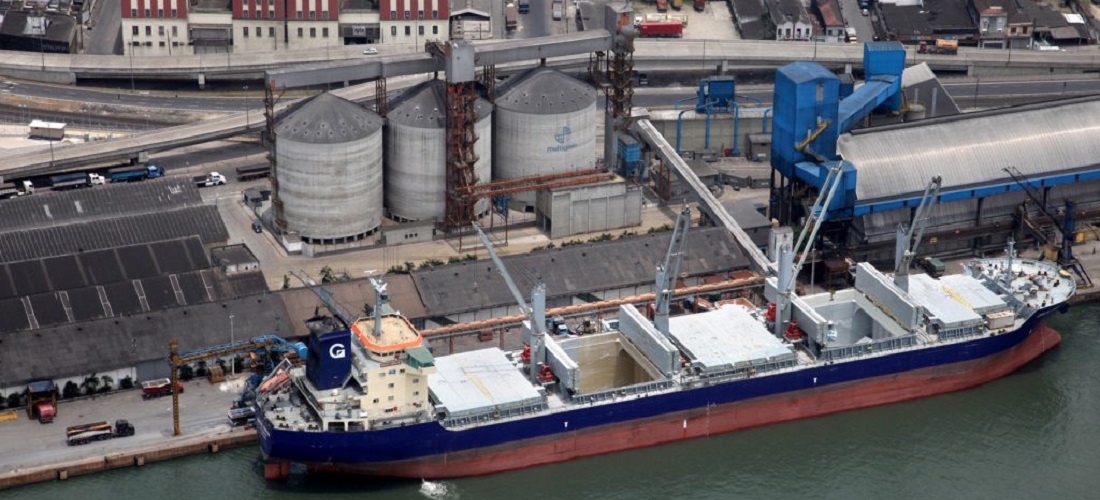
Finances for federal dock companies show considerable improvement
Jan, 21, 2020 Posted by Sylvia SchandertWeek 202004
A survey by Brazil’s Ministry of Infrastructure found that three out of the country’s seven federally-run port authorities reversed financial losses in 2019 and registered a profit. They were the SPA (Santos Port Authority), formerly known as Codesp, which manages the Port of Santos (SP). Codeba (Companhia Docas da Bahia), which manages the ports of Salvador (BA), Ilhéus (BA) and Aratu (BA). And CDP (Companhia Docas do Pará), which manages the ports of Santarém (PA), Miramar (PA), Itaituba (PA), Vila do Conde (PA), Belém (PA), Outeiros (PA) and Óbidos (PA). According to the study, the consolidated result of all seven companies drastically improved, seeing a reduction from a loss of R$ 1 billion to a loss of R$58 million.
The state of Pará’s CDP went from a loss of R$33 million in 2018 to a profit of R$35 million last year. Codeba, reversed its loss of R$ 11.4 million to a profit of R$ 9.7 million. And lastly, the SPA posted a profit of R$150 million in 2019, after having registered a loss of R$ 468 million in 2018.
According to the national secretary of Ports and Waterway Transports, Diogo Piloni, “This is the result of improved management, reduced payrolls, contract optimization, increased revenue and price adjustments. Some companies that were damaged for years have managed to reverse their results. Even those that did not post a profit, have managed to improve their financial results”, he said.
The survey also pointed to a 1% growth in Brazilian port movement between 2018 and 2019. Data used for the study was consolidated based on figures from Antaq (National Waterway Transport Agency) and port authorities. Finalized data was used for the months up to October 2019 while estimates were taken for November and December.
The study also found that 19 terminals registered an increase in the volume of cargo handled. Santarém (PA) saw the most growth, up 30.7% in 2019, followed by the Port of Itajaí (SC) with an increase of 23.2% in relation to 2018. The Port of Vila do Conde (PA) came third, with a 19.3% increase in cargo volume.
Dry bulk cargoes were responsible for the growth seen at the Port of Santarém, accounting for almost all of the 12 million tons transported in 2019. Dry bulk was also the main driver at the Port of Vila do Conde, representing 73% of the total handled last year. Both ports are managed by CDP (Companhia Docas do Pará). At the port of Itajai the products most handled were wood, derivatives and chicken on the export side. In imports the main cargoes were plastics, rubber and chemicals.
According to Piloni, the only reason the results were not even better was because of the rupture of the VALE dam in Brumadinho (MG), in January last year. As a result of the breach, iron ore exports were severely diminished across the country. “Additionally, the outbreak of swine fever in China, the main consumer of Brazilian soy, impacted the volume of grains exported,” he said. In any case, out of the 19 ports that posted a profit, there was a 6.1% growth in throughput. Volumes rose from 296 million tons in 2018 to 313 million tons in 2019.
Sector projections
In 2020, in addition to the privatization process of Codesa (Companhia Docas do Espírito Santo), SPA, and the administrator of the Port of São Sebastião (SP), the government plans to hold 15 auctions – nine port terminals have already been qualified by the PPI (Investment Partnership Program). Forecasts are that by 2022, 28 auctions will have been held, raising investments of around R$3.8 billion.
-
Ports and Terminals
Feb, 01, 2023
0
Itapoá port acquires new container inspection scanners
-
Jan, 20, 2021
0
Brazilian orange juice exports fell 23.5% in 2nd semester of 2020
-
Ports and Terminals
Aug, 13, 2020
0
Santos port reaches new record in July with 13.49 million tonnes handled
-
Ports and Terminals
Dec, 30, 2022
0
Rail transport of fertilizers now at full steam at the Port of Itaqui


